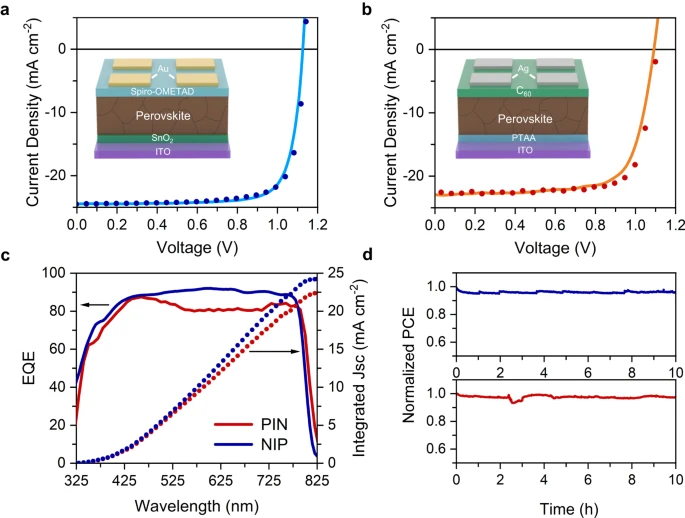Science Daily July 20, 2023
An international team of researchers (USA – Rice University, National Renewable Energy Laboratory, Lawrence Berkeley National Laboratory, Germany, France) designed and fabricated a conductive adhesive-barrier (CAB) that translates >99% of photoelectric power to chemical reactions. The CAB enabled halide perovskite-based photoelectrochemical cells with two different architectures that exhibited record STH efficiencies. The first, a co-planar photocathode-photoanode architecture, achieved an STH efficiency of 13.4% and 16.3 h to t60, solely limited by the hygroscopic hole transport layer in the n-i-p device. The second was formed using a monolithic stacked silicon-perovskite tandem, with a peak STH efficiency of 20.8% and 102 h of continuous operation before t60 under AM 1.5G illumination. According to the researchers these advances will lead to efficient, durable, and low-cost solar-driven water-splitting technology with multifunctional barriers… read more. Open Access TECHNICAL ARTICLE

Photovoltaic performance and stability of perovskite solar cells. Credit: Nature Communications volume 14, Article number: 3797 (2023)